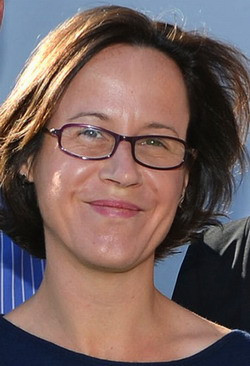The number of people admitted to Auckland City Hospital with Staphylococcus aureus (S. aureus) infections increased significantly between 2001 and 2011, a recent study1 has found.
Dr Deborah Williamson, a Clinical Microbiologist at Auckland City Hospital and a Clinical Research Fellow at the University of Auckland, led the study with the support of a Clinical Research Training Fellowship from the Health Research Council of New Zealand. She and her colleagues identified all patients with S. aureus infections presenting to Auckland District Health Board during the study period – 16,249 in total. They found that the average number of S. aureus-related hospitalisations increased by 14 per cent over that time, from 360 people per 100,000 in 2001 to 412 people per 100,000 in 2011.
The study, published in the journal BMC Infectious Diseases, largely attributes this upward trend to an increase in the number of non-invasive, community-associated infections – that is infections contracted outside of a health setting or present on admission to hospital.
Twenty-three per cent of patients had an invasive infection; with the rest (77 per cent) having a non-invasive infection.
The main culprit identified was not the methicillin-resistant strain of S. aureus (MRSA), but one known as methicillin-susceptible S. aureus (MSSA).
Although S. aureus is most commonly associated with skin and soft tissue infections, it’s also responsible for a range of serious invasive infections, such as infection of the bone (osteomyelitis) and the severe bacterial lung infection, necrotizing pneumonia.
“Our finding of a significant increase in the number of hospitalisations for skin infections is in keeping with other recent studies in New Zealand, and further highlights this concerning national trend,” says Dr Williamson.
“The reasons for this increase are unclear, but contributory factors are likely to include delayed access to health care, increases in household crowding, and declining socioeconomic circumstances.”
The number of S. aureus-related hospitalisations was highest in the under-five and over 75 age groups, among Māori and Pacific peoples, and in patients living in areas of high socioeconomic deprivation.
More than half (56 per cent) of all those patients who contracted their infections after exposure to health care interventions (i.e. hospital-onset) had invasive infections, compared to only 26 per cent of people with community-associated infections.
To read more about the study, go to www.biomedcentral.com/1471-2334/13/569.
1 Williamson et al.: Incidence, trends and demographics of Staphylococcus aureus infections in Auckland, New Zealand, 2001–2011. BMC Infectious Diseases 2013, 13:569.
